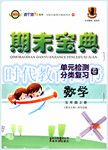题目内容
Vending machines (投币式自动售货机) are found in 16% of U.S.elementary schools, 52% of middle schools and 88% of high schools.About 22% of students in grades 1 through 12 buy food in vending machines each day—and those purchases added an average of 253 calories to their diets, according to a new study in the September issue of the Journal of School Health.
Just to be clear, those were not 253 calories' worth of tofu, yogurt or carrot.The most popular vending machine items included soft drinks, candy, chips, crackers, cookies, cakes and ice cream.On the plus side (好的方面), kids also bought low-fat milk, fruit juice and even fruit, the study found.
But the eventual effect on kids' diets was not good.Those who bought from vending machines ate an average of 156 grams of sugar per day, compared with 146 grams for those who abstained (节制).They also consumed less fiber, iron and vitamin B.
One silver lining: Vending machine customers ate 4% less sodium (钠) than other students--an average of 3,287 milligrams per day compared with 3,436 mg for those who didn't buy from vending machines.That's probably because the extra snacks made kids too full to eat as much at mealtimes, when dishes are especially Salty.In any event, kids should eat no more than 1,200 to 1,500 mg of sodium each day, according to the Mayo Clinic.Even for adults, the government recommends a daily limit of 2,300 mg.
Overall, vending machines in school appear to be a threat to children's health.The researchers calculated that all that snacking adds up to about14 extra pounds per child per school year.For some students this might be a serious contributor to weight issues.The study was based on data collected from 2,309 children nationwide for the third School Nutrition Dietary Assessment Study, which was
conducted by the U.S.Department of Agriculture's Food and Nutrition Service.
1.The students using vending machines take in less of all the following EXCEPT .
A.sugar B.fiber C.vitamin D.iron
2.The underlined words “One silver lining” mean “ ”.
A.a discouraging condition at present
B.a bright side of a difficult situation
C.an urgent warning from health experts
D.an increasing concern from the public
3.Why do kids buying food from vending machines take less salt probably?
A.They prefer less salty food.
B.They have formed healthy eating habits.
C.They eat less food at mealtimes.
D.They take less junk food as snacks.
4.What's the purpose of the text?
A.To teach children a balanced diet.
B.To introduce the finding of a new study.
C.To remind parents of children's health.
D.To tell the history of vending machines.
1.A
2.B
3.C
4.B
【解析】文章讲述的是新的研究发现自动贩卖机的使用会导致学生卡路里的摄入,
1.事实细节题,根据第三段Those who bought from vending machines ate an average of 156 grams of sugar per day, compared with 146 grams for those who abstained (节制).They also consumed less fiber, iron and vitamin B可知,
2.推理判断题,根据该段的Vending machine customers ate 4% less sodium (钠) than other students--an average of 3,287 milligrams per day compared with 3,436 mg for those who didn't buy from vending machines和第三段的内容可知,此处表示的是由好的一方面的影响
3.事实细节题,根据第四段That's probably because the extra snacks made kids too full to eat as much at mealtimes, when dishes are especially Salty可知
4.推理判断题,根据第一段可知,文章主要是介绍了这种新的发现。

 期末宝典单元检测分类复习卷系列答案
期末宝典单元检测分类复习卷系列答案Vending machines (投币式自动售货机) are found in 16% of U.S.elementary schools, 52% of middle schools and 88% of high schools.About 22% of students in grades 1 through 12 buy food in vending machines each day—and those purchases added an average of 253 calories to their diets, according to a new study in the September issue of the Journal of School Health.
Just to be clear, those were not 253 calories' worth of tofu, yogurt or carrot.The most popular vending machine items included soft drinks, candy, chips, crackers, cookies, cakes and ice cream.On the plus side (好的方面), kids also bought low-fat milk, fruit juice and even fruit, the study found.
But the eventual effect on kids' diets was not good.Those who bought from vending machines ate an average of 156 grams of sugar per day, compared with 146 grams for those who abstained (节制).They also consumed less fiber, iron and vitamin B.
One silver lining: Vending machine customers ate 4% less sodium (钠) than other students--an average of 3,287 milligrams per day compared with 3,436 mg for those who didn't buy from vending machines.That's probably because the extra snacks made kids too full to eat as much at mealtimes, when dishes are especially Salty.In any event, kids should eat no more than 1,200 to 1,500 mg of sodium each day, according to the Mayo Clinic.Even for adults, the government recommends a daily limit of 2,300 mg.
Overall, vending machines in school appear to be a threat to children's health.The researchers calculated that all that snacking adds up to about14 extra pounds per child per school year.For some students this might be a serious contributor to weight issues.The study was based on data collected from 2,309 children nationwide for the third School Nutrition Dietary Assessment Study, which was
conducted by the U.S.Department of Agriculture's Food and Nutrition Service.
【小题1】The students using vending machines take in less of all the following EXCEPT .
| A.sugar | B.fiber | C.vitamin | D.iron |
| A.a discouraging condition at present |
| B.a bright side of a difficult situation |
| C.an urgent warning from health experts |
| D.an increasing concern from the public |
| A.They prefer less salty food. |
| B.They have formed healthy eating habits. |
| C.They eat less food at mealtimes. |
| D.They take less junk food as snacks. |
| A.To teach children a balanced diet. |
| B.To introduce the finding of a new study. |
| C.To remind parents of children's health. |
| D.To tell the history of vending machines. |

